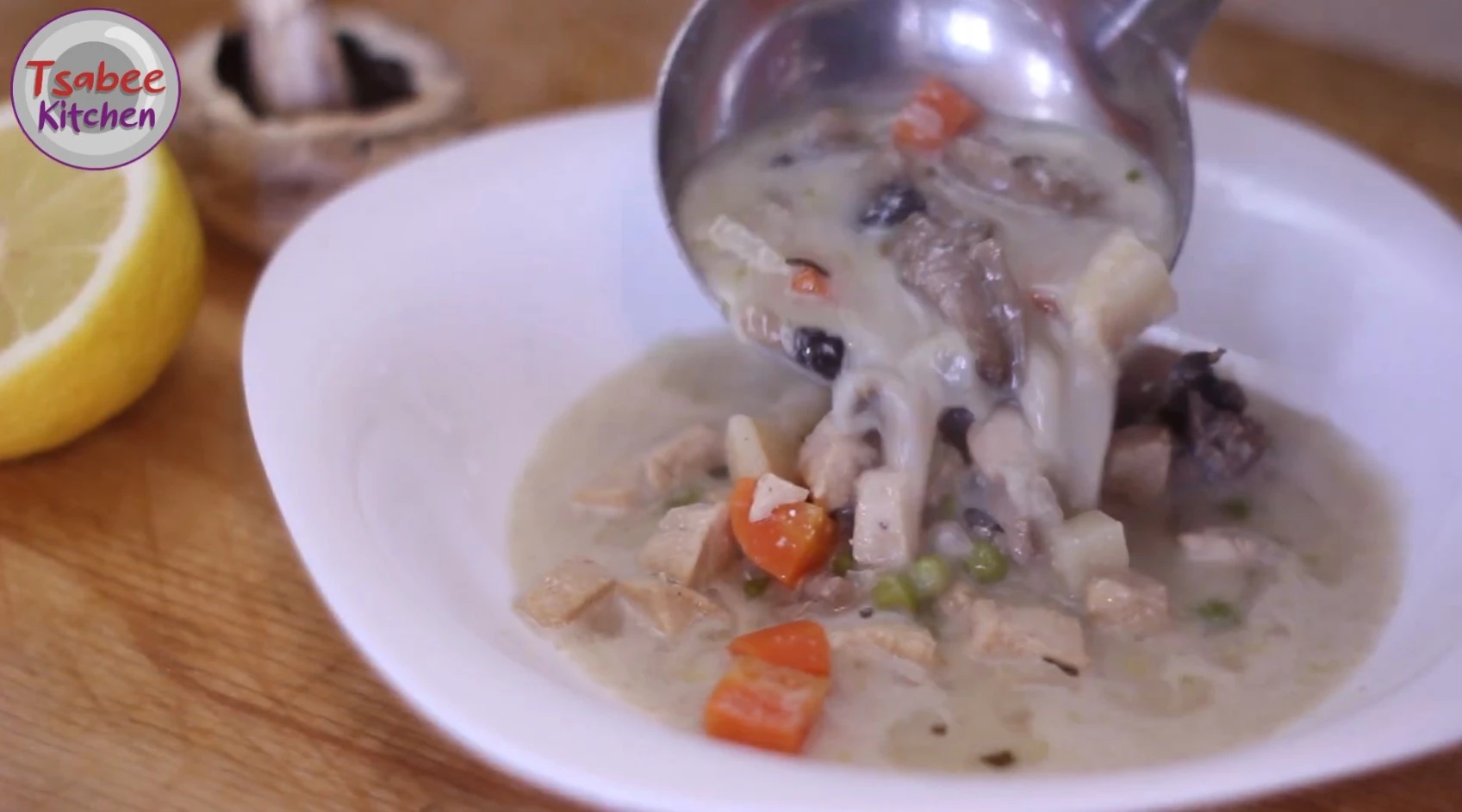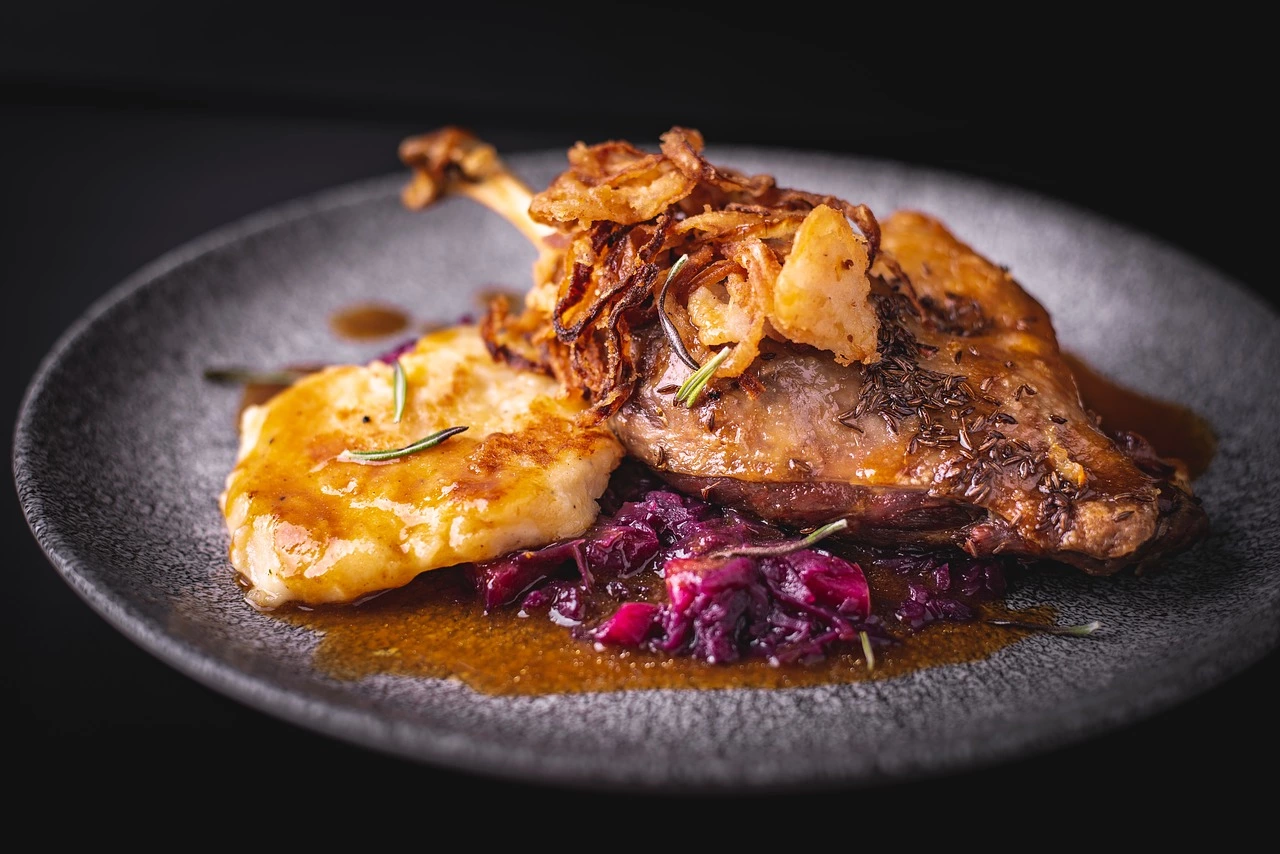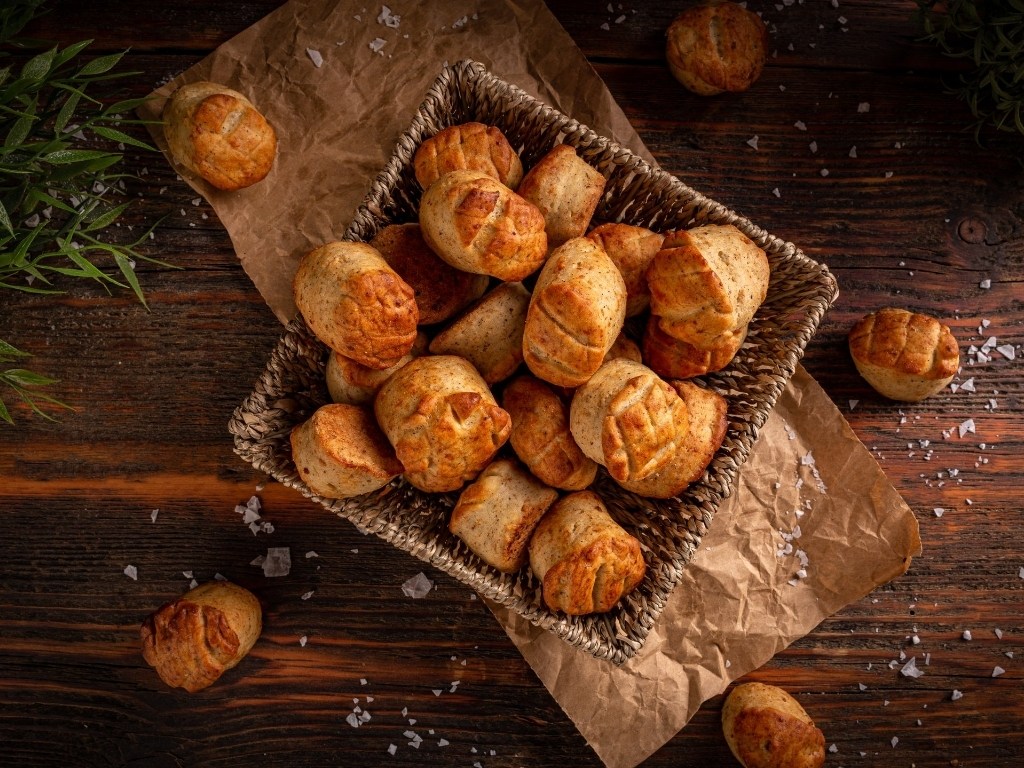6 traditional dishes popular around the Hungarian Carnival season

The Hungarian Carnival season is a holiday of celebrations, balls, and merriments, and, just like many other Hungarian holidays, there is no true celebration without delicious food.
In this article, we collected six recipes for you so you can make a full meal to celebrate the Hungarian Carnival season with us.
Soups
Legényfogó leves (Bachelor’s soup)
According to popular belief, the way to a man’s heart is through his stomach. It is no coincidence that this soup is named accordingly. There is everything in this soup a man or a person after a party in the Carnival season would need.

Ingredients
- 40 dkg chicken breast
- 30 dkg chicken liver
- 20 dkg green peas
- 20 dkg mushrooms
- 20 dkg mixed vegetables (carrot, celery, parsley root)
- 2 dl cooking cream
- 2 dl sour cream
- 2 heads of onion
- oil
- salt
- white pepper
- 2 dl chicken soup stock (or 2 dl water and instant chicken stock)
- 1 teaspoon dried tarragon
- 1 teaspoon lemon juice
Instructions
Cut the onions into small pieces and sear them until golden brown over a little oil, then add the cubed chicken breast into the pot. Clean and cut the vegetables into small pieces. Then, if the meat turns white, add the vegetables and the peas. Add salt and pepper.
Cover the pot and steam the meat and vegetables until half-done, then add in the cubed mushrooms. Add water and chicken stock to the pot.
When every ingredient is cooked soft, add in the liver you cut to the same size as your chicken breast pieces. Bring the soup to a boil and cook the liver for five minutes in the soup.
Mix the cooking cream and sour cream together until it becomes homogenous, then add it to the soup. Flavour the soup with a teaspoon of dried tarragon and bring it to a boil again. Once it reaches boiling point, take the pot off the heat. After a few minutes, mix in the lemon juice.
Enjoy.
Gombás korhelyleves (Hungarian korhely soup with mushrooms)
The essence of the korhelyleves, of course, is to soothe a hangover, reduce headaches, heartburn, and other symptoms of having had too much fun the previous night, and also to replenish your energy so that you can rinse and repeat.
Ingredients
- 25 dkg smoked meat
- 10 dkg smoked sausage
- 35-40 dkg sauerkraut
- 10-15 dkg mushroom
- 2 onions
- a bundle of parsley
- 5 dkg flour
- 2 dl sour cream
- 2-3 teaspoons of olive oil
- salt, pepper, paprika
Instructions
Dice the onions and glaze them in a bit of oil, then put the diced meat into the pot. Sprinkle it with paprika, mix it, and then add the sauerkraut. Add water so that it covers everything, then cover with a lid and cook over medium heat.
While the soup is on the stove, slice up the mushrooms and fry them in a little oil. Add it to the soup, season it, and bring to a boil. Make a light roux to thicken the soup. Slice the sausages, and when the soup is almost ready, add in the slices of sausage.
Season the soup with sour cream to your liking, or you can serve the sour cream on the side. You should be careful not to add too much salt as the smoked meat and sausage is already quite salty. Enjoy.
Main dishes
Májas hurka (Liver sausage)
Bloody food may sound barbarian at first. However, blood sausage and pan-fried pig’s blood are common winter dishes in the country. Hungarians usually start their day with a big plate packed with these delicacies on the days of the traditional pig slaughter.
Ingredients
For the broth:
- 5 l water
- 2 heads of onions
- 2 heads of garlic
- 5 bay leaves
- 1 tbsp whole black pepper
- 3 tbsp salt
For the sausage:
- 33 dkg (pork) organ meat (liver, heart, kidney, tongue, lungs)
- 33 dkg (pork) meat and skin (skin with fat, bacon or pig’s belly, regular meat)
- 8 dkg rice
- 25 g crushed marjoram
- 5 g paprika powder
- 5 g salt
- 4 g ground white pepper
- Intestine or artificial guts for the skin of the sausage
- 2.5 dl broth for cooking the rice
Instructions
To make the broth, wash and clean the onions and garlic and cut them in half. Add in all the ingredients for the broth and leave it to simmer.
Clean the organs and meat and cut them up into small pieces. Add them to the broth and boil them until soft. If you want to add skin, cut it up into small cubes and add it and the bacon to the broth.
Once done, take some of the broth and cook the rice in it (4 x broth to rice ratio) until it becomes really soft.
Take the meat out of the broth and grind it with a meat grinder. Mix in the cooked rice and spices. If needed, you can add some broth so that the mixture is not too dry.
Fill the mixture into the intestines or artificial sausage skin and form smaller sausages. Bring the broth to a rapid boil and put the sausages into it for short periods of time to make them harden.
Finally, add a bit of water to the cooking utensil you use and cook the hurka in an oven at 190 °C / 375 °F for fifteen minutes. Enjoy.
If needed, you can visually follow the process here:
Konyakos kacsasült (Roast duck with cognac)
This dish is ideal for those who love duck meat with bacon and liver. In addition to the spices, the flavours are brought out by the aromas of red wine and cognac.
Ingredients
- 1 duck for roasting
- 10-15 dkg duck liver
- 10 dkg bacon
- 2 dl red wine
- 5 cl cognac
- 5 dkg flour
- 5 dkg butter
- 1 dl olive oil
- 1 onion
- a bundle of parsley
- bay leaves, thyme, salt
Instructions
Glaze the duck liver in a little oil and crush it when done.
In a separate pan, mix the other duck trimmings, the coarsely chopped onion, and the diced bacon and sear the whole mixture in a little oil. When the meat is reddish or has a little sear, sprinkle the flour on it and add the red wine and cognac and a little water so that it mixes easily.
Add the spices and bring to a boil over medium heat. When done, remove it from the heat and strain through a small mesh filter. Add the crushed duck liver to the filtered sauce and mix it in well.
Bake the duck in an oven until it is crispy and, when done, stir the fat from the pan of the duck into the sauce. Before serving, cut the duck up into slices and serve with the sauce. You can eat it with any side dish, but we recommend mashed potatoes.
Snacks and Sweets
Tehéntúrós erdélyi csörögefánk (Angel wings with curd, Transylvania-style)
Csörögefánk is one of the typical doughnuts made around the Carnival season. In English, the closest to this would be the Angel wing, a sweet and crisp pastry, but the traditional Hungarian one is made slightly differently. If you would like to try it, here is the recipe.
You can find the recipe for another typical Hungarian doughnut HERE.
Ingredients
- 25 dkg curd
- 20-25 dkg flour
- 3 tablespoons of sugar – not necessary and can be substituted with sweeteners and lemon (you only need a few drops of juice and a little zest)
- 12.5 dkg butter
- 1 egg
- 1 teaspoon baking soda
- few teaspoons of rum
- oil for frying (medium hot, if too hot, the dough will not rise)
Instructions
Mix the curd and the egg in a bowl and grate some lemon zest into the mixture. Now you can add the butter to the bowl, mix it a little, and pour a few teaspoons of rum into the mixture. The rum will prevent the dough from absorbing the oil while frying.
You can now add the flour gradually to the mixture until the dough can be formed and can be flattened with a rolling pin. While kneading the dough, squeeze or add some drops of lemon juice to the baking soda so that it starts foaming, then add it to the dough you are mixing.
If you are ready with the dough, use some flour on your work surface so that it will not stick and flatten the dough with a rolling pin so that it is about 4-5 mm thick.
Cut the dough into small squares (5-7 cm) and make a diagonal cut in the middle of each square. You can try and twist one corner through the hole if you want to make it prettier or form it so that it is a little bit more rhombus-shaped, but you can also fry it as squares.
Sprinkle powdered sugar on top or serve it with jam or marmalade. Enjoy.
Tepertős pogácsa (pork cracklings biscuit)
Tepertős pogácsa is guaranteed to become everyone’s favourite snack for its unique savoury taste. Crackling is a by-product that is made after pig slaughters. It is actually the skin and fat of the animal which is baked until it gets a nice crispy texture. As you bite into your first freshly-baked pogácsa, it will virtually fly you to rural Hungary.
Ingredients
- 50 dkg all-purpose flour
- 25 dkg crackling
- 2 dkg yeast
- 2.5 dl milk
- 1 tbsp ground pepper
- 1 tbsp sugar
- 2.5 dkg salt
- 10 dkg sour cream
- 1 egg for glazing
Instructions
Warm up the milk in a saucepan until it becomes lukewarm. Stir in the yeast and the sugar to dissolve. Let it rest for 15-20 minutes.
Combine the crackling with the ground pepper in a mixer. Once it is done, add all the ingredients to the bowl of the mixer and beat them on low speed for a couple of minutes. Cover the dough and let it rest at room temperature for an hour.
Roll the dough 2 cm thick on a lightly floured surface. Make a shallow cross-hatched pattern with the point of a sharp knife over the top of the dough. You can sprinkle some of the remaining cracklings on top.
Cut out 0.5 cm rounds with a cutter. Arrange circles in rows on a parchment-lined baking sheet, about a centimetre apart. Brush the biscuits with egg yolk. Let the dough rest for 30-40 minutes. Preheat your oven to 185 °C / 365 °F.
Finally, bake them for 12 minutes at 185 °C / 365 °F. Enjoy.
There is also a variation with cheese:
Source: bien.hu, mindmegette.hu, vajling.hu, Daily News Hungary











Please don’t insult delicious Scones (usually served with jam and clotted cream) by calling Pogács by the same name. At best they are cousins, twice removed. For a start, scones are not made with yeast and secondly, self raising flour (not all purpose) is needed along with baking powder. Thirdly, from start to finish they take 20 minutes to make, not 2 hours. Also, for those unfamiliar with it, the Gombás korhelyleves will most certainly NOT cure heartburn, quite the opposite in fact. The sauerkraut and smoked meat is a guarantee of heartburn later in the day or at night.
The article states “proper food”? I would love to hear a definition of what “proper food” is supposed to mean along with a definition of improper food.
Dear Anonymous, most probably the author meant ‘big portion of filling dishes’. It’s been corrected though. 🙂